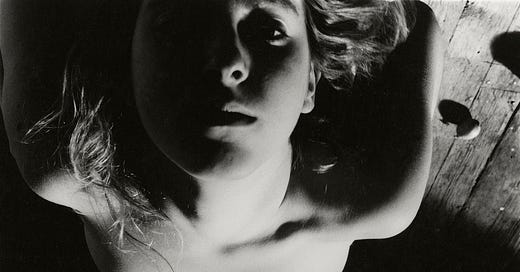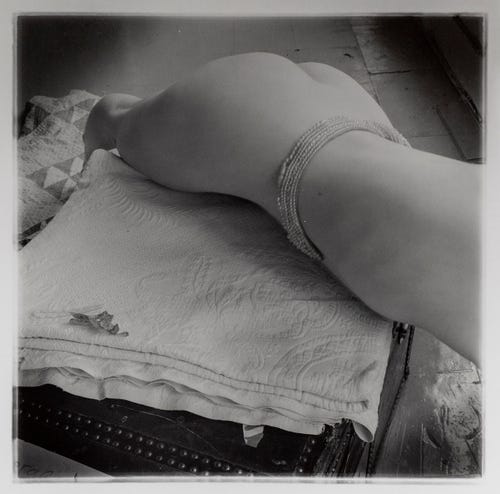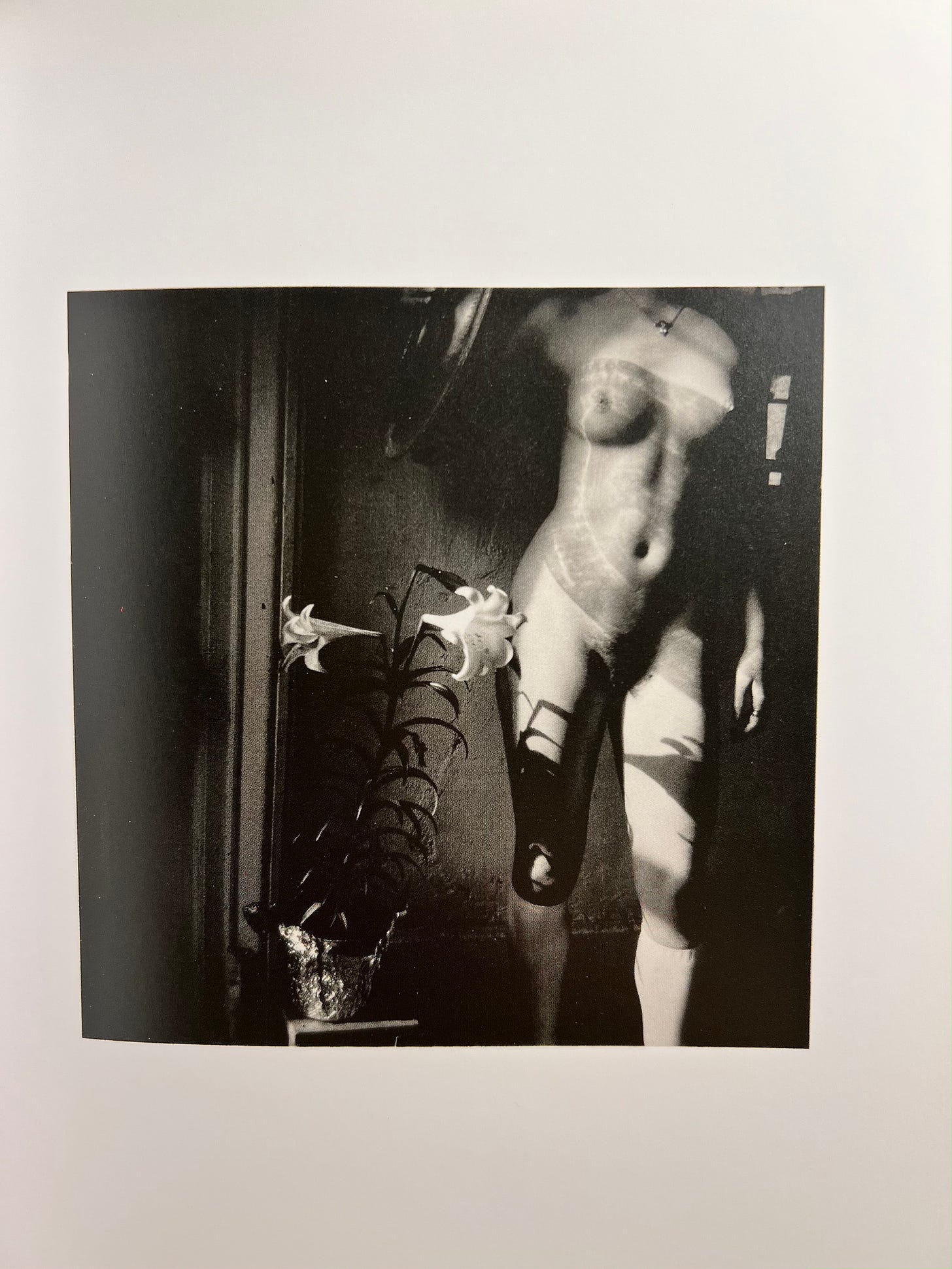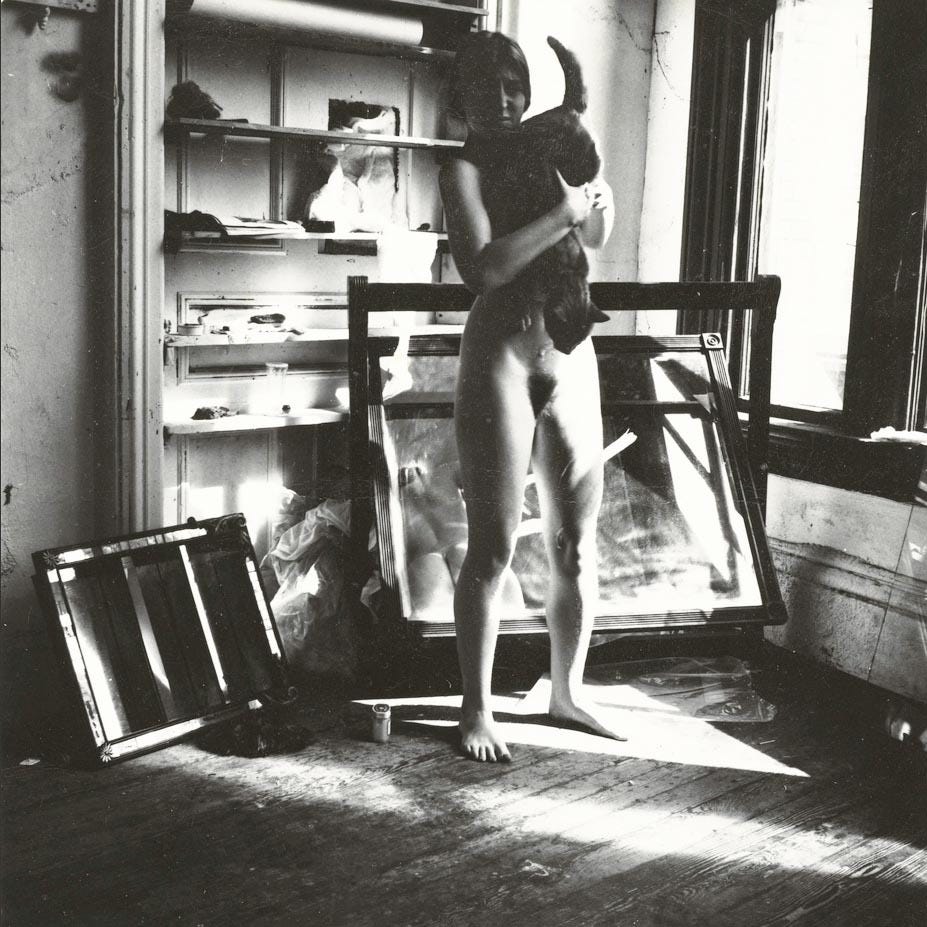“Then at one point I did not need to translate the notes; they went directly to my hands”
Francesca Woodman wrote these words in the lower corner of a photograph from 1976. It shows her hands feeling their way up a wall as she squats down with her back to the camera, her body hidden behind a strip of wallpaper.
Francesca Woodman may only have been a teenager when she composed this image, but she was, even then, already an artist poised to make history.
I love when books pick me, sometimes I let myself pick a book at random from my library and get inspired by its energy. Its an old habit of mine to buy more books than I actually read them but for some reason I know i’ll get back to it.
So, here we are today going back into Francesca Woodman’s work. I am not usually a fan of “catalog” books from exhibitions but I could not get off my eyes of this one.
The American photographer Francesca Woodman (1958–1981) created a body of fascinating photographic works in a few intense years before her premature death at the age of 22 years old.
Woodman’s photographs explore gender, representation, sexuality and body.
The intimate nature of the subject matter is enhanced by the small formats. She often used her body as a starting point, acting both as object and subject, and excavating a new role for the artist in still photography. Woodman worked in settings such as derelict buildings, using mirrors and glass, evoking surrealist and at times even claustrophobic moods.
There is a kind of movement in her aesthetic world, in which the surroundings, the room, objects, and her own body are arranged in remarkable constellations and are subjected to her investigative gaze. She often appended her images with a handwritten comment, placing theses scenes in yet another sphere. Notebooks function in a very different way than photographic prints: they promise intimacy, revelation and raw thoughts. Nightmares scrawled and dreams recalled.
“They promise intimacy, revelation and raw thoughts. Nightmares scrawled and dreams recalled.”
Woodman’s life was wrapped up in her art, and in that sense, she lived intensely and burned brightly, leaving behind some 800 works. While a remarkably prolific number given her age, it is not, for prospective curators and publishers, a bottomless well.
“I often wonder what Francesca would have made of today’s art world,” Berne, Francesca’s friend, writes.
“No doubt she would have achieved success (whatever that means). No doubt she would have gone along with the critics’ rhetoric and the quasi-celebrity and the jockeying for position and the social rigmarole and all the rest because it was part of the game and Francesca did know how to play the game, that’s for sure, but she would have known the score, she would have rolled her eyes, and she would have laughed. Boy, would we have laughed.”
"The work of Francesca Woodman lies in the realm of still photography," Woodman's father, George Woodman, writes in the beautifully scaled and somehow tactile new release, On Being an Angel. "Nevertheless, her images using the formal device of a zigzag are anything but still. They are restless pictures filled with motion. The viewer’s glance is never permitted to halt and is urged onward to embrace sequences, consider episodes, submit to rhythms, and confront changes of identities. These images are less tied to the logic of 'presentation,' which is the core of still photography, and more the result of a choreography of images, an artful control of the irrepressible motion within them."
“How could so young a person create such strong and complex images?”
To examine Francesca Woodman’s aesthetic oeuvre is a challenge and an adventure. Her images reference history and the history of photography, but they also reflect their time while unlocking new interpretations. She is deeply personal, and so her themes become universal. All of this is what On Being an Angel is about.



















j'ai vu cette expo et j'ai son livre de photos chez moi. Très bon choix baby ;)